The Games
As important as all of the previous sections have been in whether or not to recommend the HTC Vive to you based on its current state, the games and experiences available to play are the most impactful. If you do not want to play what is on offer, there would be little point in buying it.
Fortunately, there are a number of games I would recommended playing with the Vive. There are a lot of them already and while not all of them knock it out of the park, the ones that do, really do.
If you ever liked light gun shooting games, you will have a blast with the HTC Vive. Space Pirate Trainer, Brookhaven Experiment, Hordez and Hover Junkers are all brilliantly fun shooters. Thanks to the HTC Vive's wand controllers, you really feel like you are gripping guns and firing them.
Space Pirate Trainer
The haptics provide a little bit of recoil, the trigger system is nice and smooth and the tracking is dead on. There is a real reason Hover Junkers has a shooting range in it: because if you cannot shoot, you will not hit anything. There is no auto-aim in HTC Vive shooters, you have to be a good shot to shoot even stationary targets, so when other players are involved, ducking and firing back, it becomes a whole other ball game.
I have always been a big fan of these sorts of games, whether in arcades or at home with the Wii or even back in the PSX days with Time Crisis. Shooters with hand-held weapons are awesome fun and the HTC Vive has already delivered the absolute best experience I have ever had with that genre in spades.
I simply cannot wait for a House of the Dead remake with this sort of technology.
But if you are not into shooters, that is not a problem, because the Vive has some other stunning games for you to experience also. Titles like Call of the Starseed with its first episode, The Gallery, and Fated, offer uniquely immersive environments, with puzzle solving elements and the hint of a larger story to come.
They look stunning too. The graphics might not quite be AAA level, but being in VR does not require it. The immersion is that strong – especially when you throw in relatively believable characters and voice acting to set the tone.
Waltz of the Wizard
If all of that seems a little overwhelming though, for a really great insight into many of the hugely positive aspects of the Vive's virtual reality offerings, Valve's The Lab is a great starting point. Whether it is using two-controllers to fire arrows like a real archer, or playing fetch with your robo dog, or simply exploring the confines of the DotA 2 secret shop, you begin to realise the importance of roomscale.
That said, Vive titles do not need to be serious. Indeed some of the most fun you can have in VR when you first start out, is in games like Job Simulator, Surgeon Simulator and Waltz of the Wizard, where exploration and trial and error are encouraged. Irradiate your customer's food in Job Sim, or throw a plate to the hungry background fish; how about making your trombone dance in Waltz? Or throwing fireballs at the ogre as it looks through the window?
Finding your boundaries in VR is one of the most joyous things you can do, because it turns out that apart from the walls of your very-real physical space, the virtual world has far fewer.
If you like your driving games, Project Cars has a really solid VR implementation. I did not have a wheel and pedals to hand, but I would imagine with those set up, you would have a near perfect driving simulator in your home.
Of course not all of the Vive games are stand outs. Skeet Shooting is rather dull, Fated needs some pacing tweaks for its story, Space Pirate Trainer, Zenblade and similar experiences can become tiresome after a few hours, but there are a number of games I have come back to time and again, so those deserve a special mention.
Audioshield – I have played this for countless hours. Once you have played it, all other rhythm games feel like weak interpretations. It is great fun and much like Audiosurf before it, offers an entirely new way to enjoy your musical collection.
Audioshield
Vanishing Realms – Wielding a sword and shield in VR is some of the most fun I have ever had. It is incredibly satisfying to block with one hand and slash away with your other controller.
Budget Cuts – The combination of using roomscale movement with teleportation in this one is stupendous. The combat is fast and frenetic and gives you just enough of an edge that you feel like a super sleuth, without being Super-Man.
Windlands – A beautiful world, engrossing movement mechanics and some of the most sweat-inducing gameplay I have ever taken part in. Windlands offers a great challenge and a lot of gameplay for the money.
I could go on and on about the content available for the HTC Vive, but suffice to say, there is something for everyone and many of the games and experiences on offer are unique in the type of gameplay they offer. While much less of the Vive's library is catered towards traditional, relaxing, sit-down gaming than the Oculus Rift is, if you are looking for more active, more engrossing and engaging games, the HTC Vive has that in spades.
And if none of that excites you, you can use Big Screen or theatre mode to play some of your favourite games on giant displays of your choosing. You can even use your controllers as a mouse pointer in the former.
The Experiences
As with the Oculus Rift, not all of the HTC Vive's virtual reality offerings are about interaction. Although the motion controllers are one of the biggest selling points of the Vive, sometimes it is fine to just sit back and watch.
It is a shame that there is no “HTC Studio” like there is with Oculus, producing 360 degree movie content, but when the Revive driver works right, you can watch the same Oculus movies on the Vive and they look just as phenomenal as before. In-fact, it would be tempted to say that being able to move around the environments, makes them even more immersive – though I do wonder if 360 degree movies built around mobile view points will be less easy to make than ones with a stationary audience.
Other experiences available like TheBlu, offer some quick insights into what educational media can be like in VR. You can stand next to a model or skeleton of a Blue Whale all you like, but when it swims past you in virtual reality, you can really feel the size of it. VR has a lot of potential to teach people about size and scale.
That is even more pronounced in titles like Time Machine. While that experience has you tagging sea-faring dinosaurs, so there is some measure of interaction, it does a good job of introducing facts, figures and dates, making it an interesting educational experience.
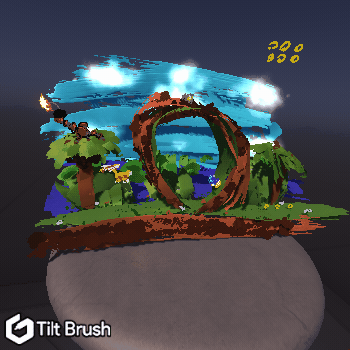
The same can be said for the way Valve's The Lab lets you visit exotic locations using VR postcards. I have never felt so much like I was somewhere else than I did when putting on some of those bubbles. It is impossible to explain, but standing in that photogrammetry stitched cave was truly like being teleported.
As great as those experiences are though, the one that had me at hello, was TiltBrush. A free game/experience bundled with the Vive and freely available on Steam, TiltBrush lets you paint in virtual reality. It might seem silly, or dull, but popping on some good music you can find yourself engaged for hours toiling away on your own digital world.
I am no artist, but even some of the environments, sculptures and creations I was able to put together leave me misty eyed with how in-depth you can get in their making. What fashion designers and real artists have been capable of is truly astounding.
360 degree digital artwork should very much be a new art form and I am really excited to see what comes of it. In the mean time, if you can try and experience out there for the Vive, TiltBrush is the one to play with.
But of course virtual reality can be a somewhat lonely place, especially if you are the only one of your friends who has one. Fortunately then, you can head into AltSpace VR. AltSpace is a number of freely accessible environments for people to hang out in virtual reality.
Better yet, it is hardware agnostic, so you can find yourself hob nobbing with HTC Vive users, Oculus Rift users and those with older developer headsets too. There are games to play together, Youtube videos to watch and there is even tabletop roleplaying at certain times and dates.
Altspace also just held its first live virtual reality stand-up comedy gig with Reggic Watts. There is a lot of scope for expanding this sort of content. I am really excited to go to a few gigs in VR in the near future.
Playing Oculus Games
You may be aware that there has been an ongoing debate in the VR community for the past few months about whether Oculus' hardware/store exclusivity with certain titles is a good thing or not. While I found it confusing in my own review of the Rift, since the quality was not as uniform as Oculus made out it would be, it has left Vive gamers out in the cold.
That is until the Revive driver came along. Although there has been some back and forth sparring between developers and Oculus in enabling and disabling this hack/mod that makes it possible to play Oculus games through Steam VR, I did finally get it working and had a play on a few games and experiences that were supposed to be only accessible on Oculus.
I will not get into comparison between the two headsets, and will not give full coverage of the games since they are not officially supported. That said, the fact that you have access to the entire Vive library of games and almost the entire Oculus library as well, gives the Vive even more content to play with and that is always a good thing.
A note on roomscale and Chaperone
As noted throughout this review, roomscale – the ability to walk around your space safely – is one of the biggest selling points of the Vive, along with its motion controllers, so it is worth addressing a few important aspects of it.
For starters, while I did use the minimum space for roomscale play (2m x 1.5m) it was perfectly adequate. I was able to play almost all games without any mishaps – only in Vanishing Realms did I accidentally hit the wall while trying to strike a nearby skeleton.
Job Simulator
That said, more space is certainly better. By having added room you can not only move around more, but the chaperone boundaries, the blue, translucent-grid that prevents you walking into the wall, retreat further, helping you stay immersed for longer.
Ideally, you would have the maximum space to play with, but if you do not, I would still say the Vive is a worthy buy. You can always tone down the chaperone opacity – though beware, as that did lead this relatively experienced VR user to crash into the wall once or twice.
Fortunately the Vive hardware is pretty sturdy.
What about nausea?
None. Not once during testing did I experience nausea. I do have quite sturdy VR legs and am not typically affected by motion sickness, but to give this some context, I have experienced it with the earlier Oculus Rift developer kits and also with the CV1.
Thanks to the ability to walk around scenes in VR, the excellent, near-perfect tracking and the motion controllers of the Vive, presence is assured in virtual reality and when all of that is combined with the new displays and lenses, there is little reason to fear feeling sick within an HTC Vive.
Camera, smartphone support
A couple of other features that I need to mention but would not really fit in anywhere else, are the front-facing camera and smartphone support.
The front-facing camera on the Vive can be used to give you a much more real chaperone system, whereby you can actually see your environment with a tron-like filter. It can also give you a direct feed when pulling up the menu (depending on preferences). That is handy for when someone outside of the VR world wants to chat to you, or you just want to reorientate yourself.
The smartphone functionality is a nice addition that can help reduce the distance you feel from the real world. Getting texts and calls in VR is easy enough after a quick link up, though you do need to re-pair your phone with the headset's bluetooth function every time you leave and return to VR which can be annoying.
The mic inside the headset is not great either.
Smartphone integration is far from perfect and is one of the weaker implementations of the Vive, but we know it was somewhat of a last minute addition, so it makes sense that it is not quite as polished. Perhaps as time goes on we will see some software updates continue to improve it.
 KitGuru KitGuru.net – Tech News | Hardware News | Hardware Reviews | IOS | Mobile | Gaming | Graphics Cards
KitGuru KitGuru.net – Tech News | Hardware News | Hardware Reviews | IOS | Mobile | Gaming | Graphics Cards



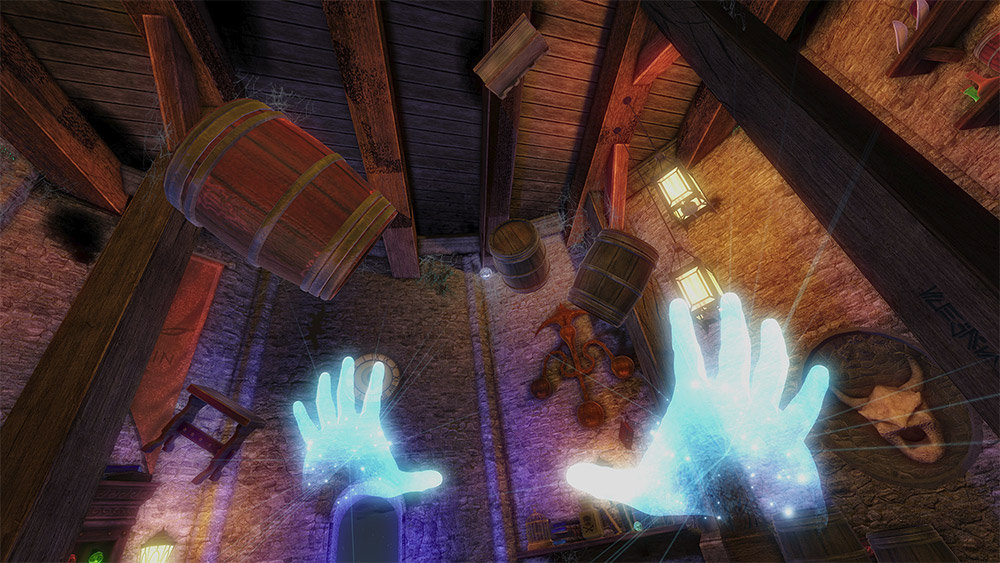
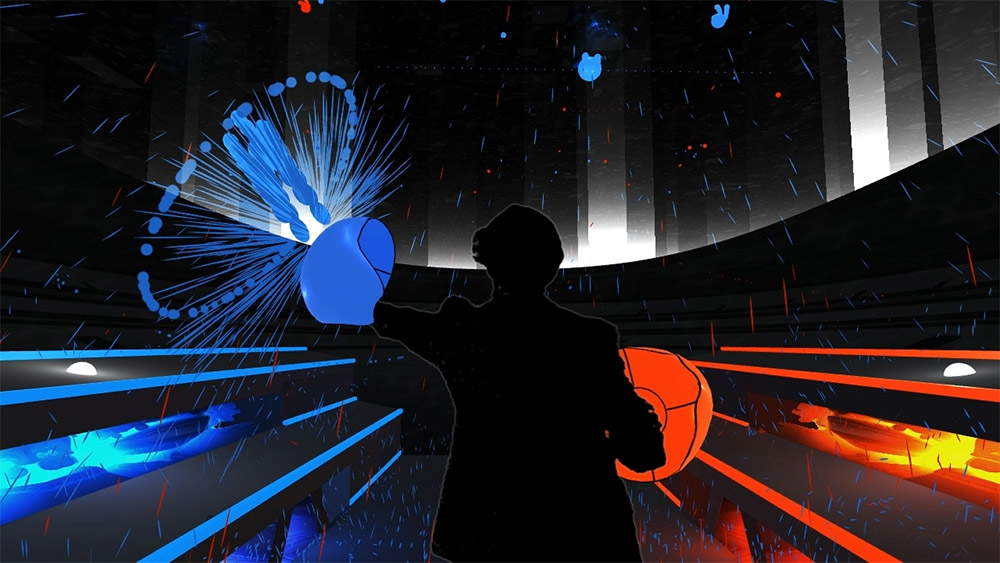
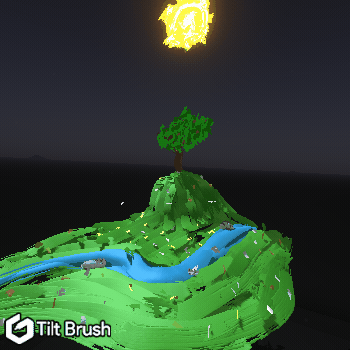
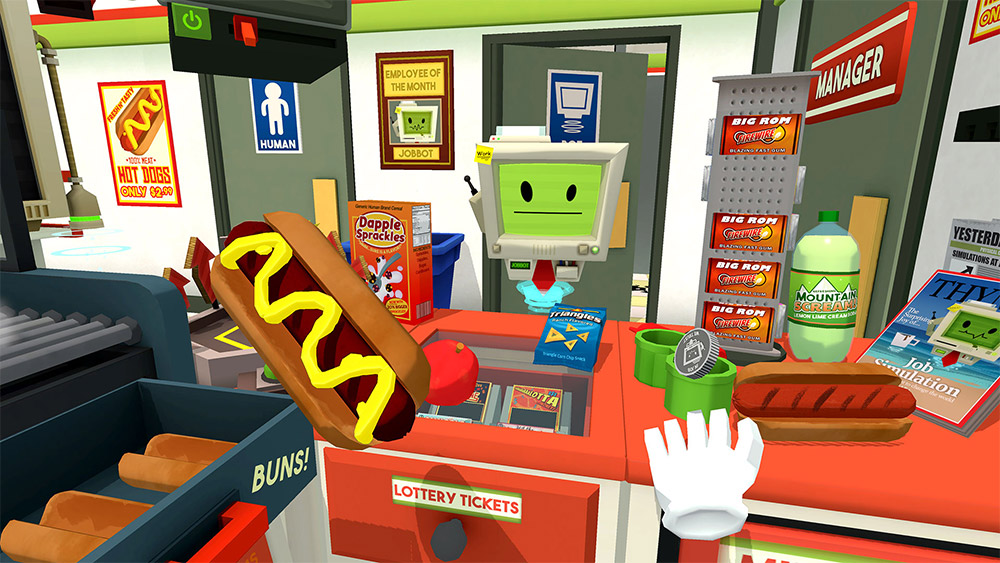

We’ll wait for this “other day” I guess…
Just picked my up from gamestop….long ride home…
StarVR…come on, i am going to wait for it. A lot better than this.